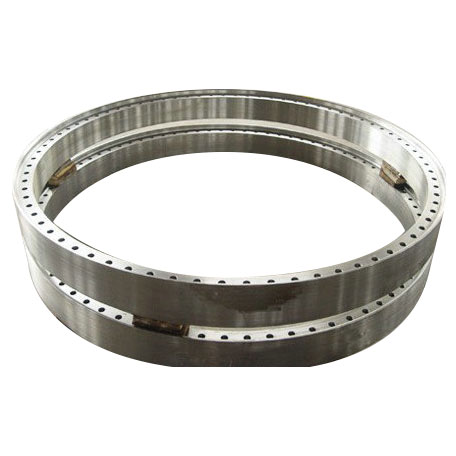Ensuring Quality and Safety: Industry Standards for Large Diameter Wind Power Flanges
2024-03-21
In the realm of renewable energy, wind power continues to gain traction as a vital contributor to global efforts towards sustainability. At the core of wind turbine systems lies a crucial component: the large diameter wind power flange. These flanges play a pivotal role in ensuring the structural integrity and reliability of wind turbine towers. To uphold high standards of quality and safety, the design, manufacturing, and use of large diameter wind power flanges are governed by industry standards and regulations. Let's delve into these standards and their significance in ensuring the reliability and performance of wind energy infrastructure.
1. International Electrotechnical Commission (IEC) Standards:
The International Electrotechnical Commission (IEC) sets international standards for the design, performance, and safety of electrical and electronic technologies, including wind turbines and their components. IEC standards relevant to large diameter wind power flanges include IEC 61400 series, which covers design requirements, load assumptions, testing methods, and safety considerations for wind turbine structures and components. Compliance with IEC standards ensures that flanges meet rigorous criteria for structural integrity, performance, and reliability.
2. American Wind Energy Association (AWEA) Guidelines:
The American Wind Energy Association (AWEA) publishes guidelines and best practices for the wind energy industry, providing recommendations for design, manufacturing, installation, and operation of wind turbine systems. AWEA's standards address various aspects of wind turbine components, including towers, blades, drivetrains, and foundations. While not regulatory requirements, adherence to AWEA guidelines ensures alignment with industry best practices and fosters innovation, efficiency, and safety in wind energy development.
3. European Committee for Standardization (CEN) Standards:
The European Committee for Standardization (CEN) develops technical standards for products and services across Europe, including wind turbine components. CEN standards related to large diameter wind power flanges encompass materials, design criteria, testing procedures, and performance requirements. Compliance with CEN standards ensures consistency and interoperability of wind turbine components across European markets, facilitating trade and deployment of wind energy infrastructure.
4. ISO Standards:
The International Organization for Standardization (ISO) develops global standards for quality, safety, and performance across various industries, including renewable energy. ISO standards relevant to large diameter wind power flanges cover materials, manufacturing processes, testing methods, and quality management systems. Compliance with ISO standards ensures that flanges meet recognized benchmarks for quality assurance, product consistency, and environmental sustainability.
5. National Regulatory Requirements:
In addition to international standards and industry guidelines, national regulatory authorities may impose specific requirements governing the design, manufacturing, and use of wind turbine components within their jurisdictions. These regulations may address aspects such as structural design codes, material specifications, safety standards, environmental impact assessments, and permitting requirements. Compliance with national regulations ensures legal compliance and adherence to local safety and environmental standards.
6. Certification and Third-Party Verification:
Independent certification bodies and third-party verification agencies play a crucial role in assessing compliance with industry standards and regulatory requirements. Certification programs such as the IEC Type Certification and AWEA's Wind Turbine Certification ensure that wind turbine components, including large diameter wind power flanges, meet specified performance, safety, and reliability criteria. Third-party verification provides impartial validation of product compliance and instills confidence in the quality and reliability of wind energy infrastructure.
In conclusion, industry standards and regulations play a pivotal role in ensuring the quality, safety, and reliability of large diameter wind power flanges and other wind turbine components. By adhering to internationally recognized standards, manufacturers and stakeholders uphold rigorous criteria for design, manufacturing, and use, fostering innovation, efficiency, and sustainability in the wind energy sector. Compliance with industry standards not only ensures the reliability and performance of wind turbine systems but also instills trust and confidence among stakeholders, driving continued growth and adoption of wind power as a clean and sustainable energy source.



